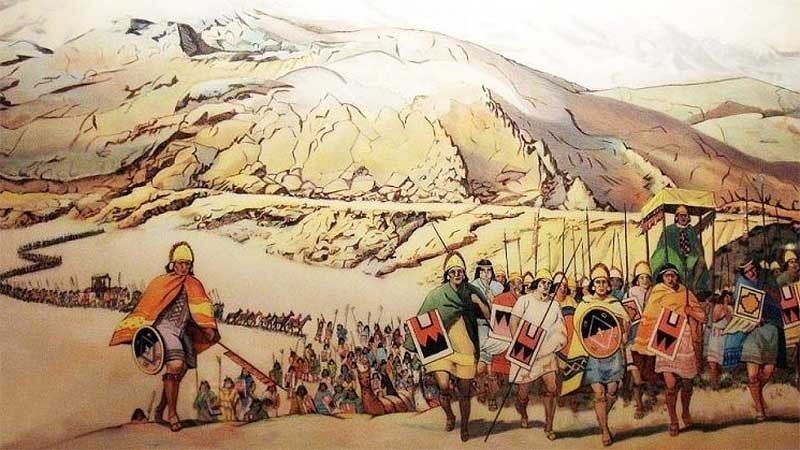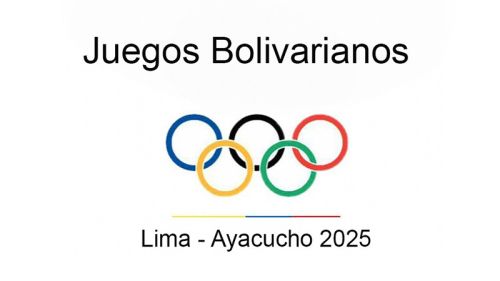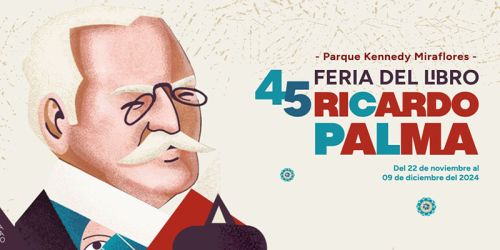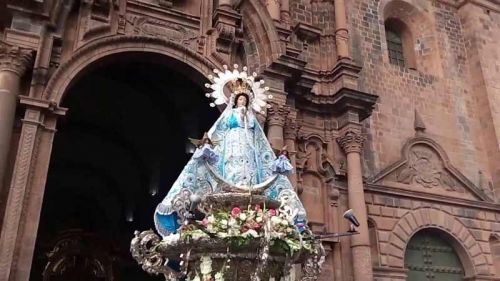Topa Inca Yupanqui or Túpac Inca Yupanqui was the tenth Sapa Inca (ruler and governor of the Inca Kingdom) from 1471–93. He was appointed by his father Pachacuti to head the Inca army in 1463 and extended the realm northward along the Andes through modern Ecuador. This story in this legend shows how deeply the relationship was towards their gods specially in times of need.
The Legend of The Storm
When Topa Inca Yupanqui was lord and had conquered many provinces, then for a long time he rested in great satisfaction. But finally, there came a rebellion of the Allancu, Callancu, and Chaqui. These tribes would not be subjects of the Inca.
The Inca fought with them for twelve years, enlisting many thousands of his people, all of whom, however, were destroyed. The Inca mourned and was deeply troubled, thinking, "What will become of us?"
One day he thought to himself, "Why do I offer the gods my gold and silver, my woven robes, my food, and everything else that I have? What do they do for me? Now, this moment, I will send for them so that they can help me against these rebels." He spoke aloud and summoned them with the words: "Wherever you are, come, you who receive gold and silver!" The gods heard him, and they came.
Pachacamac and the other gods came from every part of Tahuantinsuyu. All came together in the great square at Cuzco. Pariacaca, however, had not yet arrived. "Should I go? Or should I not go?" He was unable to make up his mind. Then at last he sent his son, Macahuisa, saying, "Go! And listen!"
The Inca began to speak: "O Fathers! Gods and Spirits! You know already how I have made you sacrificial offerings of gold and silver. My heart has been filled with devotion. And seeing that I have served you well, could you not come to my aid, now that I am losing so many thousands of my people?
But when he had spoken, no one answered. They merely sat there saying nothing. Then the Inca spoke again: "Speak! You made and created these people. Will you let them die in battle? Help me! Or I will have you all burned on the spot. Why should I serve and adorn you with gold and silver, food, drink and llamas of mine, and everything else that I have? You hear my sorrow, and if you will not aid me, or even speak, you must burn on the spot."
Then Pachacamac began to speak: "Inca, O Rising Sun, I who can violently shake all things, even you and the whole earth, I have not yet spoken, for were I to destroy these rebels, then you too and even the earth would likewise be destroyed. And so, I sit here saying nothing."
Then at last, though the remaining spirits kept their silence, the one who was called Macahuisa began to speak: "Inca, O Rising Sun, I will go forth! You will remain behind and watch over your subjects and protect them with your thoughts. I will go at once. For your sake I will conquer!"
As he spoke, metal poured from his mouth like an out-flowing vapor; and there before him were golden panpipes. He blew on the panpipes and made music. Upon his head he wore a headdress. His staff was gold. His tunic was black. Then, so that Macahuisa could go, the Inca gave him one of his own litters and selected strong litter bearers from among the Collahuaya, who in but few days could cover many days' distance. And so they carried Macahuisa in a litter against the enemy.
When they had brought him to a little mountain, Macahuisa, being Pariacaca's son, began to make it rain, at first gently. And the people living in the villages below thought, "What is this?" and prepared themselves for the worst. Macahuisa flashed lightning and made more and more rain until all the villages were carried away in a flood; and where the villages had been, he made gullies. With lightning he destroyed their overlord and all their nobles. Only a few of the people were saved, but had he willed it, he could have destroyed them all. Having conquered them totally, he led the remaining survivors back to Cuzco.
From that time on, the Inca revered Pariacaca even more than he had before and furnished him with fifty attendants to make him sacrificial offerings. Then to Pariacaca's son he spoke: "Father Macahuisa, what can I give you? Whatever you wish, demand it of me! Anything!" But the god answered, "I will have nothing at all, only that you worship me as our sons from Jauja do." Then the Inca said, "Very well, Father." But he was filled with fear, thinking, "Perhaps he could destroy me too," and therefore he wished to make him an offering of anything whatsoever. And so he said, "Eat, Father!" and gave him food. But Macahuisa replied, saying, "I am not accustomed to eating food. Bring me coral!" Then he gave him coral, and he ate it at once with a crunching sound. Though he asked for nothing else, the Inca presented him with sun maidens. But he did not take them.
And so Macahuisa set off for home to report to his father, Pariacaca. And after that, the Incas in later days would come to worship in Jauja and dance dances of admiration.
Inca litters
Litters could be used for both travel and during battle. While the Sapa Inca was usually carried in a litter, he could also give other nobles the privilege.
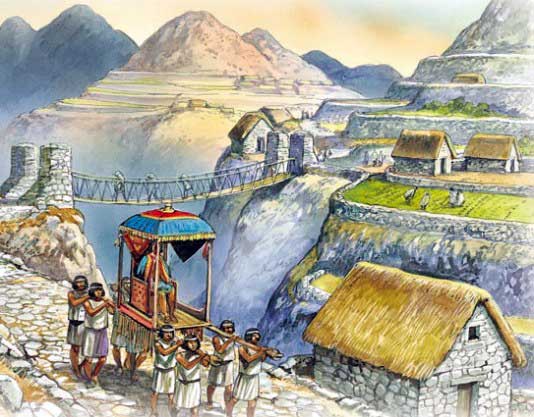
The bearers are Carabaya natives, a mountainous region north-east of Lake Titicaca. The canopy was called an Achihua, made of the feathers of rare and gaudy birds. The rampa could have had curtains to screen the occupants from sight.


